Q&A: Mars, Mental-Health and Managing Bitcoin
It's that time again for another Q&A show, a chance for you to have your say! This week we delve behind the headlines as well, trying to figure out what social media platforms are doing to protect their users and discovering why Bitcoin, after 12 years, is now considered a threat to the global financial market. All that and more with Gareth Mitchell, Chris Riley, Eleanor Drinkwater and Andrew Steele. If you have a question, why not give us a whirl. Let us help you scratch that scientific itch...
In this episode
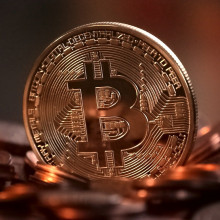
05:40 - Could Bitcoin cripple the world's economy?
Could Bitcoin cripple the world's economy?
Gareth Mitchell, Imperial College London
If you are plugged into the world of cryptocurrency you’ll be aware that the Bank of England appears to be worried that the trading of Bitcoin could lead to a crash in the financial market similar to that seen in 2008. That came out in an interview earlier this week where Sir Jon Cunliffe, deputy governor of financial stability, called for the regulation of crypto declaring it a growing threat to the global economy. Gareth, you might have to take me right back to basics. What is Bitcoin and why is it causing such a stir?
Gareth - Yeah, sure. Bitcoin is a digital asset basically. So it's a digital asset that we can buy and sell through exchanges. But there's a key difference because you might say that an MP3 file or a JPEG, they're both digital assets. Like this radio show, if it's available as a podcast, it is a digital asset. But the thing is of course, with an MP3 file, you can make as many copies as you want. So that would be a pretty lousy currency. It would be like photocopying bank notes, it would just be ridiculous. It wouldn't work. So the thing that makes the digital asset that is Bitcoin a currency is the way that, for instance, if I'm exchanging something to you and we're exchanging Bitcoin, the proof that I've handed that asset to you and the proof that you can trust is that that transaction is logged on this thing called the blockchain. I'm sure lots of people have heard about blockchains. There are lots of really complicated explanations for them, but you can think of the blockchain as almost like a massive, great big shared spreadsheet, and everyone has a copy of this spreadsheet. And so that transaction between, for instance, you and I of that Bitcoin is logged on this spreadsheet and Chris, or anybody else, could come along and then delete that entry from the spreadsheet. But every entry is what we call cryptographically sealed. So once it's there, it can't be removed. And so that makes it an asset that can be bought and sold. And without a trusted third party, that's why people are saying it will do away with banks because traditionally for us to exchange assets, we would have to go through some kind of trusted third party, which might be a bank or a traditional currency.
Harry - And it's been around for quite a while, Gareth. So why is it now all of a sudden starting to scare the financial market?
Gareth - I think because it's just grown so much. Blockchain has become such a thing. Say five years ago, a Bitcoin was worth just 500 pounds. And as we record this, the value when I looked it up just now is 46,000 pounds for a Bitcoin. So it has grown to the level that people like us are talking about it and the big central banks are talking about it. And so it's obviously capturing a lot of attention. And I suppose the question is, does that attention warrant Bitcoin some sort of special status. People are saying it's going to disrupt, and probably is already disrupting, the banking system. But will it do away with central banks and traditional currencies altogether? And I think that's the big discussion at the moment.
Harry - It takes me back to the thought of when it was first around and you could spend a Bitcoin or something, buying a cup of coffee.
Gareth - And that is actually one of the worst things about it, absolutely. Imagine if you hold some Bitcoin, are you going to say, a bit like your cup of coffee example, well, because I'm sitting on this asset that's going to appreciate in value - I'm banking effectively on it, doubling or quadrupling or more in value over a certain period of time. You're going to say, well, I'm not going to buy that cup of coffee, or I'm not going to buy that house or that yacht, or what have you, because this asset that I have sitting in my crypto wallet is going to be worth a lot more in a while. And that to me is one of the big problems of it being a currency, because you tend not to look at the pounds in your bank account and think, well, I better hadn't spent these pounds because you know, by next month they could be worth twice as much so I'll just hold onto them until then. So actually that cup of coffee example completely, embolises why for many people, Bitcoin is problematic.
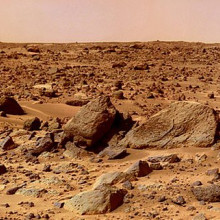
08:49 - Project: Worlds Apart
Project: Worlds Apart
Chris Riley
It’s been a year of successful missions to the red planet. UEA’s hope satellite went into orbit, China landed their first rover on the surface and perseverance has been hard at work scavenging for signs of martian life. So far without much luck, but maybe Chris can help us put this into perspective. Each landing site on our closest cosmic neighbour acts as a snapshot of what Mars looks like, but what if our places were reversed? What if we lived on Mars and tried digging up more information about Earth? What would those landing sites look like? Back in February, prior to the launch of perseverance, Chris set up a project on Medium called Worlds Apart. Transposing the landing sites on Mars to their respective locations here on Earth. Chris, how many landing sites are we looking at, and what made you come up with this idea?
Chris - When I did this exercise in February, there were eight Martian landing sites to play around with, they're all in fact NASA's projects, other space agencies have tried to go and not succeeded. But eight times NASA has succeeded in a soft landing. The reason I did this was that people kept looking at these brand new pictures of Mars that were coming back, friends of mine, and they'd say, oh, it just looks the same as the last one, and the sky's a bit red, the ground's a bit red, the rocks are rocky and sand is sandy. And what is the point in going again? And I wanted to kind of grab them and shake them and say, no - I'm a geomorphologist by background, my PhD is in geomorphology - each one of these sites is uniquely different. They just look the same color because there's not this kind of beautiful mantle of biodiversity on Mars that, that gives us such a range of kind of special landscapes. So, I thought I'd draw attention to this diversity of what Mars really does look like by comparing pictures to the same latitudes and longitudes on Earth. I didn't know what I'd find when I first started this and I've never looked into this before. And it turned out actually five of the eight Martian landing sites, corresponded to some of Earth's giant oceans, the Atlantic and the Pacific. And what I found interesting about those was that, of course it was impossible to see any life. There was no evidence of life and there was the prospect of life because they were wet, unlike Mars it's very dry, but there was no actual life visible, it was just these big waterscapes. So two of the three locations then mapped onto our boreal forests - Bikin, a forest in Eastern Siberia and the Phoenix polar lander on Mars, touched down in the equivalent place of Tuktut Nogait National Park in Northern Canada. So these places give us a glimpse of life, relatively simple plant-like life, mostly trees and bushes. And then the Curiosity Rover landed in the only spot that was sort of equatorial, an equatorial rainforest in west Papua New Guinea, the equivalent of that on Earth. And this had a greater diversity of life in sight on just a random snapshot of it. But again, it was mostly plant life. I couldn't see any creatures in this sort of random shot I managed to pull out of there. So what was very remarkable was the Earth wasn't quite as varied as I thought it was going to be actually number one and number two, there wasn't any sign of human life, actually. So, I thought, how much actually of Earth have we kind of changed? So when I looked that up, it's 3% of Earth's planetary surfaces where we inhabit. Incredibly, 7-8 billion of us only take up our towns and cities, 3%. But our outreach beyond that to sustain our lives takes up 50 to 70% of it. And yet still these eight points on earth actually were so remote that they bear no marks of us at all. Even these days with Google Earth and Street View, it's very hard to get precise pictures of these exact locations. I had to be a bit more vague actually with where I was picking them. We talked about this back at the beginning of this year on his Digital Planet show on the World Service, BBC World Service. And I pointed out at that time that the Perseverance lander, which was just about to touch down, it's a big, amazing six-wheel rover, NASA's latest one, was going to land on a site that was actually a bit more inhabited relatively to the place on Earth, in a place called Telangana, about a hundred miles northeast of Hyderabad. So, I tracked down a school that was nearby in a place called Sawali, a little, tiny little school and a polytechnic in a town nearby called Loni. And I reached out to both of them and said, Hey, but I never heard back from them. They're such rural locations. They don't have real reliable internet connections. So, I tried Astronomers Without Borders next and that network, which goes around the globe, had loads of Indian contacts. That didn't work either. So I'm afraid to say, I still haven't managed to...
Harry - We're still one short?
Chris - We're still one short. It was easier to get a shot from Mars and from Earth unbelievably.
Harry - There's still a little bit of way to go, but maybe potentially in the future, if someone's listening now, where do they have to be near? Where do they have to be near to to help you out, Chris?
Chris - Yeah. Well, okay. So if anyone is listening and is interested in contacting me then, so about a hundred kilometers Northwest of the top of Hyderabad, that vicinity please get in touch. I'd love to know. Equally China, as you might know, touched down that Tianwen-1 lander for the first time on Mars, a few weeks later, and coincidentally, that spot maps onto an area in Southern China, extraordinarily, randomly, which is 40 kilometres Southwest of a place called Guilin. So anyone up for a bit of a treck into the forests outside Guilin, please get in touch too.

14:39 - Why do birds migrate north for winter?
Why do birds migrate north for winter?
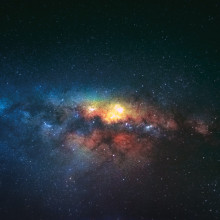
23:60 - When is an astronaut not an astronaut?
When is an astronaut not an astronaut?
Gareth - No.
Eleanor - I don't know. To me it felt like space based tourists, which is also really awesome.
Harry - That's a good answer that we might come to shortly. Andrew, what about you? Yes or no?
Andrew - I think no. And I think the worst part of it was that Jeff Bezos seemed to insist on being referred to as 'astronaut Jeff Bezos' thereafter. Even if they are called astronauts, it's not a title.
Harry - Chris Riley, your our space junkie for today. What are your views on this?
Chris - You have got to examine a bit of the backstory on this. Where does space begin? It's a thing called the Karman line, which is defined by the amount of air density that you need to give lift to a wing to give you powered flight. And if you go higher and higher, the density of the air gets lower and lower until you can't actually get any lift from a wing.You can't steer a vehicle using a wing because it doesn't interact with the fewer atoms and molecules in the air to give you any sort of force. That's the Karman line. It sits at around about a hundred kilometres or 60 miles. Back in the 1960s, the US airforce had a few pilots flying these rocket planes called the X-15 planes. And they said it'd be really nice if our brave X-15 pilots and my God, they were brave. If any of you have seen the film first, man you'll know how terrifying it was to fly those aircrafts. They said, they are only going up to about 80 kilometres, 50 miles up, and we want to give them national wings. So the air force started saying space begins at 50 miles, not 60. Now, let's spin forward a few decades and suddenly we've got tourists doing these flights. So Virgin gets up about 86 kilometres. So it goes over the US airforce defined line for the edge of space and hence in their marketing, they call it the edge of space because it's not really at the Karman line. Blue Origin well clears the Karman line at hundred kilometres, it goes up another 10 above that roughly. And of course, space X is orbital. It's staggering. The crew of inspiration4 flew pretty much higher than most space shuttle flights and space station flights have been making over the decades, up to 575 kilometers incredibly. It's really only a couple of Hubble servicing missions and the Apollo missions that have gone higher than that. So are all these people astronauts? Well, Andrew points out a good point because it's not so much a title, Astronaut Jeff Bezos. It's not a title like doctor or professor. It's a job. It's an actual job so the question is, what is that job? Well, if you look at the early outer space treaties that were drawn up to make laws about space, that would keep us all safe as human activity pushed beyond the biosphere, they define astronauts using another phrase called envoys of humankind written back in the sixties. Other laws that have been drawn up since then calling them space flight participants. But the bottom line is actually there are laws associated with these titles and those laws, hence it being a treaty, are about protecting astronauts. If they come down in another part of the Earth, in foreign lands that might do harm to them. So the term astronauts, isn't just someone who's crossed the Karman line, but a person who's owed protections in international law. And that should follow whether you're a tourist or not, of course. However, what's an interesting distinction, is that the US domestic law has been changed recently so that they have three categories of astronaut. There's crew. They're the people operating the vehicle during launch, re-entry and landing. There's a space flight participant, this phrase again, which is a person carried in a launch or a re-entry, which is more in keeping with what we're seeing here now. And then there's a government astronaut which they class probably to distinguish them from tourists. When they say mission specialists, they're not career astronauts. And this is where I have a problem, because I don't think any of these people should be called astronauts, frankly, because it requires a mindset shift. We don't call everyone who flies the Atlantic everyday, an aviator. We call them passengers. They're going somewhere to do something. There's hundreds of thousands of people at any moment of the day and night that are working in the stratosphere, but they're usually on laptops, filling in spreadsheets or doing their other jobs. Or watching a film, or eating some food up there. They're just living. And they just happened to be in the stratosphere.
Harry - That ties quite nicely in with those Russian filmmakers that have gone up to carry out a job in space, right? Their job isn't to be an astronaut. Their job is to go and direct a film.
Chris - There are a great example. Of course they are because they were no more astronauts than I'm a pilot when I fly to New York. They were just filmmakers that were up there making a film, as you say exactly. So my passionate argument here is to abolish the word astronaut unless you are a pilot.
Harry - That's right. And you can find Chris on Twitter if you've got an issue with it. I'll give that to you later on in the show. We'll try and keep it quite quick. Andrew, what would you say?
Andrew - I just thought it was wonderfully ironic that the Karman line is defined as the point above which your wing doesn't work. And yet this badge you get when you become an astronaut, it's called the astronaut wings. They clearly haven't thought this through.
Chris - I have no answer. No one's ever actually pointed that out to me, but I can't disagree with you.
Harry - You're fuelling the fire, Andrew. Eleanor, what about you?
Eleanor - I have a very important question. So talking about these space flight participants or space tourists or whatever label they're going to get, the important question is how long is it until there's going to be budget space travel, like do you see that there's going to be a FlyBe version of space?
Chris - That is a good question. I mean, I suppose it depends on what's being sold. We're ready for Branson and Bezos' ticket prices that are around the $200,000 mark. There still high price tags, but they're up there with a big adventure holiday where you've got to pay tens of thousands of pounds to climb Everest these days, for example. So they're not out of kilter with that. The question you asked is is it going to become more affordable with budget? And the short answer is, the more early adopters there are, the more people that queue up to do this sort of activity, the more affordable it gets. I mean, Musk thinks he can bring the kind of price down to something that's in the low tens of thousands of dollars for something that's even orbital.
Chris - He was talking about the price of a flight to Mars, which is comparable to the costs that the pilgrims had pay to sell to the new world, which is essentially the price of your house. You'd sell your house and go and live on Mars. That seems staggering because, in relative terms, it was hundreds of billions to get to the moon in today's money. And it would be trillions to get to Mars. The thought of doing that for the price of a house and however you look at this, and there are negatives and positives to this in terms of the expenditure, it's a revolution that these people have pioneered simply by hacking the rocket equation to make space vehicles re-usable. That's the revolution, it's a material science and a chemistry revolution.

33:32 - A spooky quiz: The world's biggest pumpkin
A spooky quiz: The world's biggest pumpkin
Gareth Mitchell, Chris Riley, Eleanor Drinkwater, Andrew Steele
Now, as we always do, we have a little quiz at this point in the programme; you can play along at home too...
Gareth and Chris, you’re team 1
Eleanor and Andrew, you’re team 2
You can, of course, confer. In anticipation of Halloween, and being the creepiest of months this week’s quiz will be extra spookyyyyyy...
Harry - That's right. Round one, we've got 'Hubble, Bubble, Boil and Trouble'. This is a question on potions. So for team one, a spooky foggy environment for your Halloween party can be easily achieved with a bit of dry ice and some water. When exposed to room temperature, dry ice, or solid CO2 turns to a gas causing the water to turn to fog. But what is the temperature above which dry ice turns to gas? Is it a) minus 58.5 degrees Celsius? Is it b) minus 78.5 degrees Celsius? Or is it c) minus 98.5 degrees Celsius? What do we think, team one?
Gareth - Wow. I hope Chris knows with his planetary science. My engineering is leaving me a little bit, kind of clueless here, really. It might be a guess.
Chris - I'm assuming we're not allowed to look these up.
Gareth - No, I was about to Google it actually. Is that not allowed? Would anybody notice?
Harry - I don't think the both of you being on the same team is such a good idea anymore.
Gareth - We're just really competitive. Aren't we, Chris?
Chris - I guess so. I mean, I know, I know it's if you drop it on your hands, it's a, it's a bit of a party trick, isn't it? It doesn't like really badly injure them. I think it's lower rather than higher is my guess.
Andrew - Are we allowed to jump in for a bonus point? I think anyone who's ever worked in a biology lab should instantly know the answer to this question because there's a special freezer that's around this kind of temperature.
Harry - Well, I think Andrew stolen the show here. So you're going to have to take over Andrew. This wasn't in the script, everyone. So we're going completely off road.
Gareth - We can answer their question.
Andrew - That's the way it's going to go. It's a real high risk strategy this, isn't? I'm giving you access. So, the answer is B minus 78 degrees.
Harry - My goodness, Chris and Gareth, how did you know that? Fantastic. The answer is B. A Number of other uses beyond just fog include for preserving food and vaccines. So dry ice gets used for quite a few different things. Question two, this is coming over to team two. Vampires love human blood. It's a well-known fact, but when humans are in short supply or things are tough financially, they might have to turn to a bit of chemistry in order to get some fake blood instead. One way to do this is to combine the colourless potassium thiocyanate, that's KSCN, water, and one other colourless compound. So two colourless compounds that come together and make fake blood. But what compound is the other? Is it a) iron chloride, b) manganese, chloride, or c) iodine chloride?
Eleanor - Well I know from my days as an amateur dramatics person that the answer is always ketchup, but that wasn't one of the options. So I'm not sure.
Andrew - Ah, this is tough, isn't it? I mean, obviously there's, there's iron in real blood, but there's also potassium. I don't know. Chemistry is my blind spot. Let's go for it - iodine whatever it was.
Harry - It was in fact, iron chloride. And you can do this at home as well. Add it with potassium thiocyanate there you go. There's a fun Halloweeny science experiment for you. Not just for vampires. Round two is dedicated to pumpkins and I've got a good title here for you guys. So prepare yourselves, it's 'Give 'em pumpkin to talk about'. The Guinness world record for the world's biggest pumpkin is held by Mathias from Belgium, but how large was Mathias's pumpkin? Was it a) 11.9 kilograms, b) 119 kilograms or c) 1,190 kilograms. That's a big pumpkin.
Gareth - It couldn't have been C, could it Chris? Can any pumpkin be that heavy?
Chris - Yeah, I think it could be C. My wife grows pumpkins and they are enormous and they regularly, I think, go up well, well over the middle one, I think. I mean, they're hard to lift and you need two people.
Gareth - Is it possible Chris that you've actually broken the Guinness world record and just not realised?
Chris - Well, I guess, I guess it is. Well, we'll find out soon. Won't we?
Gareth - All right. So you think it's the heavier one. Chris and the family there, they have more pumpkin knowledge than me. I'm really winging it here.
Chris - I think it's over a ton. That's what I would go for.
Harry - The answer is C, there you go. A typical giant pumpkin grows from seed to huge orange squash in only 120 to 160 days. At peak growth, it can put on up to 15 kilograms every day.
Chris - It's almost all water though, I think, right.
Harry - I'm going to go with your knowledge as well, Chris, at this point...
Chris - Having carved a few with my daughter over the last decade, it's pretty mushy when you get in there.
Harry - And that would be an absolute whopper to put on the doorstep.
Chris - You must be able to make a house out of that. I've got a feeling that it features in various nursery rhymes, doesn't it? You know that you've got people living in pumpkins. I'm sure there's one or two.
Harry - Yeah, it rings a bell of a child story for sure. Question two. So this is still on the theme of pumpkins. We're all used to carving them, especially Chris, at Halloween, but this tradition started with another vegetable. Eleanor, Andrew, what is it? Is it a) a suede, b) a turnip or c) sugar beet.
Eleanor - Oh, I'm so I'm from the Isle of Man. And so we actually, we don't celebrate Halloween. We celebrate Hop-Tu-Naa, and traditionally, now I'm going to get lynched if I get this wrong. But I think traditionally it's a turnip, but we don't do it. I tried that before and it was really hard. So we tend to avoid that and go down the pumpkin thing.
Harry - Andrew, I feel like your hands might be tied here. Eleanor has come in very strong there.
Andrew - I feel like it's probably not the sugar beet. That might be a good sort of trick or treat thing. But I think I'm going to go with what Eleanor says. She sounds like she's coming from a place of confidence and slight nervousness.
Harry - The answer is B. It is turnip.
Chris - Wow. What goes on in the Isle of Man then with this festival that's not Halloween. What do you do?
Eleanor - Well, the tradition is actually quite dark as most traditions are. And the idea is that you, you carve it out and you put a candle in it and you have to go from door to door, but then if it blows out, then someone, you know, is going to die in the next year, which is pretty dark. So you've got to make sure it doesn't blow out. It's a friendly, happy tradition.
Andrew - You have quite small holes in it to ensure the health and wellbeing of your relatives and friends.
Eleanor - Exactly. Well, the tricky thing is it's, it's a trade off. You want the smallest hole as possible to stop this thing from blowing out. But at the same time, you want them as big as possible so you get oxygen. And so it's a tricky balance. It's a tricky balance. The whole pumpkin thing is just a lot easier really.
Chris - Sounds very, very stressful.
Eleanor - Yeah. Yeah. Especially trying to carve a turnip. They are really, really hard.
Chris - Wow.
Harry - Fantastic stuff. So at the end of round two, we're looking at one apiece with perhaps a bonus point going in favour of the Sherlock Holmes. That's to be discussed later on, depending on how competitive Gareth and Chris get obviously. Round three, this is the last round. So it's, it's possibly all a piece, I'm not really sure, but it's 'Trick or Treat'. Question one. This is coming back to Gareth and Chris, here we go. Consider this scenario where an unknown alien species is trying to pull a prank on the whole of humanity in one, go by doing the old classic of TP-ing, TP-ing the earth. Assuming that one roll of toilet paper has a total surface area of 94 centimeters squared, how many rolls of toilet paper would be needed to cover the entire surface of the Earth? Is it 5.4 times 10 to the 10 rolls of toilet paper? Is it b) 5.4 times 10 to the 14? Or is it c) 5.4 times 10 to the 28 rolls of toilet paper. Crikey. I'm glad I'm not you boys at the moment.
Gareth - That's more than a mole of loo rolls.
Chris - Yes. Avogadro, eat your heart out. Blimey, Gareth, what you think? How big is the earth?
Gareth - Well, I'm just wondering, would it be enough to wrap around one of your pumpkin's really is the question? So the earth is. We'll have to do pi r squared on this one because isn't the the diameter of the earth about 24,000 miles or something.
Andrew - That’s the circumference of the earth.
Gareth - Oh, thank you.
Chris - That's the circumference. And what's the volume of a sphere? Is it pi 4...
Gareth - 4pi r3 isn't it?
Chris - Yeah. Is that right, anybody?
Andrew - The volume is four thirds pi r cubed, but the surface area, which is what you're looking for is four pi r squared. If I help them enough, do we sort of get some of the points?
Harry - I think you get liked by the audience, is what happens.
Andrew - Listen to this maths nerd. Let's all love him.
Chris - Well I mean, I can't be bothered to work this out, frankly. Should we just go for somewhere in the middle?
Gareth - In the mid range.
Chris - To the 14, 10 to the 28, there's such big numbers. It's hard to know what's different about them.
Gareth - And I didn't really write the numbers down first time.
Chris - 10 to the 28, so that's a lot. 10 to the 14 feels more...I am more comfortable with that. The Earth is not that big.
Harry - Alright. Yes. That's, that's completely correct. Team two, to stay in the running, here comes the question. Another common ingredient in Halloween sweets is Palm oil. You might have heard of this being linked to deforestation, particularly in Southeast Asia. But what percentage of the items that you find in the supermarket contains palm oil? Is it a) 30%, b) 50% or c) 70%?
Eleanor - That's a really good question.
Andrew - I think it's going to be scarily high, but I feel like 70% is really high. Because I know you have shampoo and soap and stuff. It's not just in...
Eleanor - Yeah, but you get It in a lot of foods, like a lot, a lot of foods.
Andrew - And when it says, like the number of items in the supermarket, when I think about going down to the mega supermarket near us, they've got loads of stuff in there. Like it's not in the toys or the hi-fi's, is it?
Gareth - In the toilet roll, maybe?
Eleanor - No, because I reckon that he wouldn't have put all of the answers as the middle because that would be too easy.
Andrew - Palm oil, food science, and more psychology to answer this question. Alright, let's go with 70.
Harry - You sure you don't want to go for the middle?
Andrew - Yep. We're definitely going. We're going all in.
Harry - It's not in those Hi-Fi systems. So the answer is 50%, 50% of the items in the supermarket.
Andrew - I've unredeemed myself.
Harry - You're right. It's not just sweets. Uh, included in many toiletries. So look out for it next time you're in a supermarket. You might, you might see it there, going by a few different names. But we're going to go onto a tie breaker. So this one's called the 'Monster Bat'. Yes. Bats are a favorite feature of many Halloween parties, but one type of bat you are less likely to encounter around this time of year is the cricket bat. Yep. After the infamous Monster Bat incident of 1771, when a cricket player called Thomas White used a bat, as wide as the wicket, the rules were modified to introduce a maximum width for said instruments on the pitch. To the nearest millimeter, what is the maximum width of a cricket bat as defined by the official rules? The official rules of cricket.
Chris - 120.
Gareth - I might, I think it might be a bit wider than 12 centimeters
Chris - 150?
Gareth - Yeah. I feel better with that, yeah.
Harry - 151 millimeters by team one. Team two?
Andrew - We could just go 150 and win by default.
Eleanor - I think. Or we could go one centimeter bigger and win by default that way?
Andrew - I think it's because if you think about a 15 centimeter ruler, I feel like that's wider than a cricket bat, but then I haven't played cricket for about as long as I haven't done GCSEs for, so...
Eleanor - Yes. I don't think I've ever done cricket in my life. So I bow to your superior knowledge.
Andrew - Should we go for 152? Let's go for 150. I'm doing it.
Harry - 150. So what you guys have done, basically, it's taken all that goodwill from the first question and you have thrown it under the bus. You're closer. You are closer team two, Eleanor and Andrew, with that horrible tactic. It is in fact 108 millimeters. So you might not be, you might not be the audience's favorite, but you do walk away with the prize. Well, there we go. How does it feel, team two?
Andrew - It feels great. I will pick up my cricket bat and run around the house celebrating.
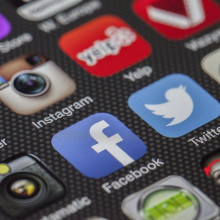
47:45 - Do social media platforms protect users?
Do social media platforms protect users?
Gareth Mitchell, Imperial College London
Last week Facebook came under scrutiny after internal research on children's mental health was leaked to the press. What's the latest on social media?
Gareth - The social media companies are, I suppose, doing their bit, a lot of people saying they're not doing enough, but, for instance, last year, Facebook, along with Google and Microsoft and a lot of other tech companies, got together to launch what they call project protect, which is a plan to combat online child sexual abuse. And some of those are things that you'd expect like tech solutions improving their algorithms and that kind of thing. But a lot of these fixes were more about just the social aspects and indeed ways that the companies could work together. So more transparency, more knowledge, more sharing, and more working with policy makers. And so that certainly from the social media companies. But they always just seem to be under the spotlight. And earlier this week, you'll know that there was this BBC investigation on Panorama that in this case was looking at abuse against women. So a different, but related issue and the technology companies. And I'm afraid that, Facebook and Instagram, which of course Facebook owns, came out the worst in terms of pushing violent and misogynistic content to users. And of course Facebook said we are improving our algorithms, we're trying to sort this out, but certainly in these really important issues about hate speech. And then of course, where we started this conversation in terms of protecting children and combating online child sexual abuse, the technology companies are taking action, but many people are not saying enough and that there's a huge role now for regulation.
Harry - And I guess that's what it comes down to. It's not feet on the ground in this world because it's across the internet. It's how good your algorithm is at finding these ads or finding this content and removing it. Is that right?
Gareth - Well, that's partly it. And I suppose to be fair to these companies, they have loads of users and these are difficult things to police. And of course Facebook will say it has employed thousands of fact checkers, for instance, and YouTube has thousands of people screening through videos to check for abusive or violent content there, or content that breaks it's terms and conditions. But I suppose our argument would be, well, we just think you should employ more people to do this. And of course the tech companies that's hurtful because it affects their profits. And of course, people like us enjoy using these services for inverted commas "free". But of course they're not free because we're giving them our data and our attention. But I think what this points to, I mean, it's very complicated, but just the economics of social media, this perception that they're free and our expectation that we can just get onto them without actually having to make a cash transaction and maybe realizing a little less than we should, but it is a transaction. It's just our data and our attention that we're handing over. And I think I'd be amongst some who would say actually that is more valuable than cash within reason.
Harry - Something that always feels quite blurred as well, but hard to remember when you're just popping on your phone on an app to have a look down social media, you are giving something back.
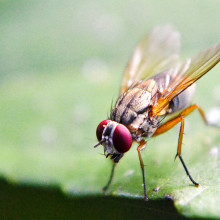
51:28 - Flies are the best insect, here's why!
Flies are the best insect, here's why!
Eleanor Drinkwater
Now the submissions for this year’s National Wildlife Photographer are up for all to see, and it jogged my memory about an old submission that got a special mention last year. You may have seen it, a rather grizzly picture of a parasite circulating on the internet. Here we go panel, what do you make of that?
Andrew - Oh dear, that doesn't look idea does it?
Eleanor - It's so cute. Look at it's little face
Harry - Eleanor, can you describe to us what we can see? What is the picture of?
Eleanor - So essentially you can see the world's most adorable bat fly, which is kind of clinging onto the face. Yeah, it's, it's a really amazing photo. Like it's, it's an incredible photo.
Harry - So it's this bright orange kind of insect that's literally covering where the eyes would be on a bat.
Andrew - Because to me, and I'm not an entomologist by any stretch, obviously it's got six legs so isn't, but to me it looks like a cross between like a scorpion and a spider.
Eleanor - I think this just really highlights just how incredible flies are. I think that when we think about flies, we think about a blue bottle buzzing around, but actually, that is only really the tip of the iceberg with the immense diversity of flies really. And so taking this one, as an example of the bat fly, there are many species of bat fly, some of which are generalists and so will feed on different bats, whereas other ones are kind of specialists and so you get a certain species of bat fly that will, parasitize a particular bat and they'll live pretty much most of their lives attached onto the bat, usually on their lower back. So they have a perhaps surprising life of a fly, but I absolutely love them because they really fill every single niche in which it's possible to exist and then there will be a species of fly that live that, for example, you may not know this, but there is actually a sub-species of mosquito, which lives on the London underground. It's developed to be able to live underground on the London underground. And the fascinating thing is that different lines on the tube in London will have slightly different kinds of genetic variation between them, which really highlights this amazing ability of this group to really change and adapt, and to kind of fill all these amazing, different niches, which is why I think they're great.
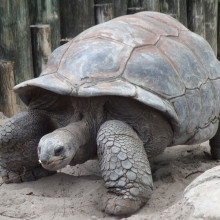
54:02 - Why do some animals live longer than others?
Why do some animals live longer than others?
Andrew - It's a really great question. Actually, I think we can tie this into the bats that we were just talking about because the reason fundamentally for anything that happens in biology is evolution. And so if you look at an animal like a bat. Bats are sort of the same kind of size as a rat or a mouse, they're in the same sort of family, they're all very closely related species. But what you find is that the longest lived bats can live maybe 30-40 years in the wild. Whereas if you look at a mouse in the lab, they can live two, three years, maybe some of them, four years at the absolute outside. So what is it that the bats have learned to do in order to live that much longer period of time and crucially from an evolutionary point of view, what's driven that change. And actually I think in the case of bats is because they can fly and it's not just because flying is brilliant fun, or they want to press on and enjoy carrying on that lifestyle. It's because it makes them a lot, lot safer than mice. So imagine you're a mouse and you're going about your day. There are loads of dangers all in the world around you. There's there's cats that can kill you. There's infectious disease. You're a tiny little animal, so you can just die of exposure. You can just die of being too cold. And what that means is that when evolution is trying to set up your biology, it's not going to put a huge amount of energy into giving you elaborate anticancer defenses, because frankly, by the time you come down with cancer age, maybe two or three years as a mouse, you've probably already been eaten. Whereas if you're a bat, your flying up in the sky, you've got far fewer natural predators. You can fly to a nice warm caves, keep yourself cozy if the weather gets a bit cold. And what that means is evolution has had a lot more chance to evolve these anti-cancer defenses, defenses against heart disease, defenses against things like inflammation, which is one of the sort of molecular biological causes of the aging process. And that means that you can find animals that are surprisingly closely related, but nonetheless have these wildly divergent lifespans. So actually the irony is that the reason that you die of aging is because you can die of other things and the less you die of other things, the more evolution is incentivized to slow down your aging as a species.
Harry - That was a really nice definition there at the end of what that accumulates to. And my thought is, is in the lab, do we know Andrew of any species where we've been able to slow down this aging in the common mouse or rat? Have we been able to extend that lifespan
Andrew - Loads of different species. Yes. There are all kinds of what are called model organisms that we use in the lab. Obviously aren't humans, but have their various advantages to try and understand the fundamental biology. And we've slowed down aging in nematode worms, these tiny little millimeter-long worms that are often used in aging experiments, in flies, and obviously in mice, because they're the ones that are closest to human beings before you start getting into really big, difficult animals to work with like monkeys. And what you can do with mice as well, let's give an example. You can give mice drugs that are called senolytic drugs. And the reason they're so named is that they kill aged senescent cells, which are one of the fundamental underlying causes of aging that I talk about in the book. And as you accumulate these cells, as you get older, they basically accelerate the aging process. So the idea is that by taking one of these drugs, you can kill the senescent cells, but leave the rest of the cells in the mouses body, or hopefully in the future in humans bodies intact. And what that means is you basically make those mice biologically younger. So we gave these drugs to mice that were aged about 24 months, and obviously we just mentioned, mice are much shorter life span than we do, so that is sort of 70 ish in human years. And even though these mice are very old and they received the treatment, they basically got biologically younger. They lived a bit longer, but they didn't just live longer in ill health sort of stumbling along, unable to summon up the energy to die. They've got fewer diseases, they've got less cancer, they've got less heart disease, they got fewer cataracts and it wasn't just the diseases. They were less frail. They could run further and faster on the little mousy treadmills they used in these experiments. They always send the mice down the gym to sort of test their frailty. They were more curious. If you've got an old mouse in a maze and its anxious, maybe just a bit lazy, doesn't want to explore. And by removing these senescent cells, you could rejuvenate some of that youthful curiosity. And honestly, these mice just look great. I'm a computational biologist by training so I have never dealt with any actual animals in the lab. But even to my untrained eye, these mice look fantastic. They've got better fur, they've got better skin. They just look amazing.










Comments
Add a comment